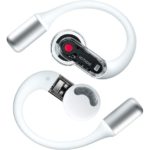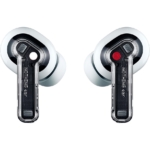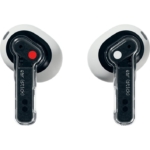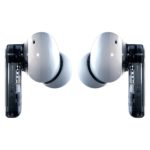The Nothing Ear (open) are high quality open ear headphones. They sound great and are comfortable to wear.
Nothing
The latest reviews: Nothing
The Nothing Ear (a) is designed for modern, powerful sound reproduction, which can be easily customised to suit your own preferences.
The 3rd generation of the Nothing Ear has noticeably improved noise cancelling and new sound customisation options.
With the Nothing Ear (2), the emerging British company focuses on innovations such as an individual sound profile and personalisable noise cancellation, especially as LHDC 5.0 technology supports high-resolution streaming via Bluetooth.
With the Ear (stick), Nothing have added True Wireless earbuds with a half-in-ear design to their range, and these can be worn comfortably by those with sensitive ears.
With the Nothing ear(1), one of the founders of the smartphone company OnePlus relies on transparent materials and, in the accompanying app, on chic design accents. The result is a successful all-round package of good sound, good app and good design – at a good...














